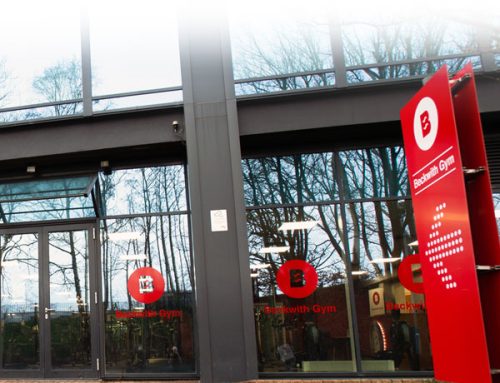I recently sustained a shoulder injury and was really frustrated about how this would impact my ability to stay active. I’d been enjoying pushing myself in the gym, especially on upper body days.
I’d been told by the GP that to heal my shoulder, I needed to avoid using it for several months, which was disappointing. I thought – how can I keep moving during this time without hurting my recovery?
Changing Exercise, Not Stopping It
It’s essential to remember that even during the recovery phase, you can still stay active and maintain your fitness level.
By making smart choices, modifying your exercises, and listening to your body, you can stay active while giving your body the time it needs to heal.
In this blog, I’ll explore some valuable tips which helped me stay active in the gym while I was recovering from an injury.
Consult with a Medical Professional
Before embarking on any workout routine, it’s crucial to consult with a medical professional or a physical therapist.
They will assess the extent of your injury and provide specific guidelines on exercises you should avoid and those you can safely perform. Their guidance will ensure you don’t exacerbate the injury and aid in a speedy recovery.
In my case, I didn’t realise my shoulder was injured until a few weeks of pain led me to visit a physio, at which point I started to rest it properly. They were able to give me some rehabilitation exercises and gave me specific advice on other workouts I could do, which was really reassuring.
To consult with a professional at Beckwith, get in touch with the team from Regen Physio! Learn more on our News page.
Adapt Your Exercises
While my shoulder recovered, I focused on lower body and core exercises. Being unable to carry weights meant I needed to stick to bodyweight lower-body exercises. Despite this, it really helped me that I could still go to the gym.
Exercise has always helped me de-stress after a long day at work, and switching to a new kind of workout distracted me from any issues with my injury.
I mainly focused on leg exercises such as squats, lunges, and leg presses, along with some core exercises which didn’t use my shoulder, like crunches.

Incorporate Cardio Workouts
Cardiovascular exercises are an excellent way to stay active without putting excessive strain on your injured shoulder.
Thankfully, my shoulder wasn’t dislocated, which prevented me from cardio. I rarely had time to run before since I was focusing on the gym, so I took the opportunity to try and get back into running.
Cycling is another low-impact sport which kept me active at this time. While running and cycling can be outdoor activities, I preferred to use the stationary bike and treadmill to track my progress, which kept me going!
As my shoulder healed, I gradually increased the intensity and duration of my cardio sessions.
Focus on Mobility and Flexibility
Incorporating exercises enhancing mobility and flexibility can be highly beneficial during recovery.
I included stretches and range-of-motion exercises specifically designed for the shoulder joint, provided by my physio. These exercises helped prevent stiffness and improved the overall healing process.
However, avoid stretches or movements that cause pain or discomfort, and always listen to your body. If it hurts – stop!

Conclusion
While an injury can temporarily disrupt your gym routine, it doesn’t have to bring your fitness journey to a halt.
By staying proactive and modifying your workouts, you can remain active in the gym while allowing your injury to heal.
Remember to be patient with recovery and prioritize your health and well-being. Before implementing any exercise routine, consult with a medical professional or our friendly, trained staff at Beckwith Health Club to ensure you make the right choices for your injury.







